Long-tailed tits and their nests-where do they make them?
Although called Long-tailed tits, they are not actually members of the tit family. Their requirements are different from those of other tit species and each species have evolved to eventually specialise in different aspects of their lives due to the competition. Each species finding different niches, such as habitat, food resources, ranges and foraging techniques. A noticeable difference is plain to see in their nest building. Long-tailed tits are recognisable by their undulating flight, a tail much longer than its small, pinkish body and generally flying in a small flock, are also known ‘flying teaspoons’. You generally hear them before you see them as they flit along in small flocks. They often nest in hedges/bushes/brambles or thickets, making them difficult to find, particularly after the leaves have opened. The ones I have found have all been in hawthorns, blackthorns or brambles, making them harder for predators to reach. They may also nest in the fork of a tree trunk and branch. Whenever I have been lucky enough to find one, it has mostly been before any leaves are fully open or my attention has been raised by hearing the characteristic sounds that they make when they return to their nests. They are early nest builders so look out for them in late February or March before the leaves open. Their nest are beautifully elaborate as the film below shos.
Nests made of moss, lichen, spiders webs and lined with feathers
The birds, being small, need insulation as they carry very little body fat. Like a wren, it is one of a few birds that makes a roof dome over its nest, which helps to retain warmth. Magpies do the same although that is to protect them from crows! The delicate nest resembles an old fashioned purse with a small entrance hole on one side near the top. It is made of moss woven with cobwebs and hair, finished off with pieces of lichen. The cobwebs are used to bind the moss to nearby branches and twigs and allows the nest to stretch slightly, handy if the 6-8 eggs hatch and the chicks get larger! It is also used to weave and stick the lichen pieces to the outside of the nest, each piece of which is collected by the birds and held in place by the cobwebs. The dappled effect it makes, really helps with the camouflage, when used against a tree trunk or as in the nest above, against the sky.
Beautiful film kindly sent by John Walters. Visit his website www.johnwalters.co.uk
Thermoregulated nest using feathers
Whilst the nest is still open like this one, the male and female birds line the base with on average over 1500+ feathers! The birds can actually regulate the temperature within the nest and accurately gauge how many feathers they need! Prior to the roof being made, the birds will still roost with their flock mates overnight. Once built though, both birds will roost inside the nest. This nest was about 4′ 6″ off the ground in a dense thicket of blackthorn which itself was along the front edge of a small deciduous woodland in Birchwood Park along a south-facing edge, boarded by grass. I watched a bird in this nest, trampling down inside, then snuggle into the cup moving and jiggling around, I suppose making the inner cup shape of the nest.
Bullying males keep warmest!
When building a nest, searching for all those cobwebs and feathers requires a lot of time and energy. Being insectivorous and being early in the year, this must be a difficult time to find their insect food. Unlike other tits, their beaks are very small and weak. Nor are they capable of holding an object under a foot in order to hammer it open. So carrying away or a nut, berry or large seed from your bird feeder is not possible. They may visit your garden feeders with their flock mates(!), with whom they prefer to roost overnight in small groups, keeping each other warm. The males bully their way to the middle, where it is warmer. The colder the night, the closer they get to each other. Unlike other tit members, they do not roost in tree holes overnight, even in winter. Its no wonder that in cold winters the fact that these birds are more dependent on insects than the other members of the tit family and their inability to make use of seeds and nuts, many long-tailed tits perish and it can take several years of mild winter weather for their numbers to become numerous again.
Flocking and family units stay together for winter
These birds would have been part of a small party of long-tailed tits, throughout the winter months. They break away to make their nests during the day and return to the roosting flock for the night. Sometimes I have seen a few blue tits or other tit species tagging along in such daytime flocks, along with other birds such as nuthatches. It is their familiar ‘tsirrip’ sound that usually grabs my attention before I spot them. Flocking offers them more opportunity to spot predators and food on a daily basis, as well as learning where food resources are, such as fat balls in gardens. Food is far harder to spot when alone.
You can clearly see the greyish lichens on the outside of the nest, helping to camouflage it amongst the dappled shade. It is even more effective when the leaves fully open around it. How do they decide which one collects the silk, moss and lichens?
Feeding preferences and where they feed
Time marches on and one bird was inside, presumably the female who would be laying or sitting on some eggs. The male would bring fresh insect food to her, which it will have found in the cracks of twigs, branches, on leaves and leaf buds of several trees including birch, oak, ash, sycamore and hawthorn. It is unlike other tit members in that it practically never comes down on the ground in search of food. Being much lighter than blue and great tits, they forage high in the trees amongst the thinner twigs inside the canopy and on the outer edges, pecking in and around holes. This strategy enables them to live alongside their larger heavier cousins, blue and great tit that themselves forage on different parts of the tree, being heavier, as well as the ground. They have a preference for hawthorn in the autumn, oak in the middle of winter, where there may be numerous winter moth eggs with birch, maple and ash after the beginning of March, then switching back to oaks again March/April to feed on small caterpillars etc.
Food choices
This bird returned to the nest. It may well be the male with some insect food such as greenfly, insect eggs, spiders or caterpillars for the female. It went inside after the photograph was taken.
Predators
Even though this nest was extremely well camouflaged in the dense vegetation and protected by a dense blackthorn thicket, some predator found it and destroyed the nest. It would be difficult to say whether these feathers are from a resident adult, a young long-tailed tit or feathers that were part of the insulating inner liner. As this looks rather fresh and was taken on 7h May, it may just be the nestling fledged some time ago. It would appear to me that the nest had been attacked and destroyed by the predator being on top of the nest. Tearing open the roof and then searching the inside by grabbing material and casting it aside. This would be consistent with a magpie, jay, or crow, finding the nest and decided to see if there were any chick or eggs inside the nest to feed to its own young or feed itself. Whereas a grey squirrel, stoat or weasel would enter via the entrance hole, search by smell and sight, leaving without destroying the nest in this manner.
Reuse nest?
As these are very delicate nests that would have to stand empty throughout the winter months, the damage caused to them, the probability that they are infested with some pest or other e.g. mites, and the fact that predators will know exactly a nest is and be mindful of any new activity there, would I suspect, lead adult long-tailed tits no other option than to build a new nest in a new location.
Nest helpers
If young birds were taken or the adult breeding attempts failed, they may help to rear the nestlings of other birds that formed part of their winter flock, to whom they may be related. Researchers have also found a failed breeding long-tailed tit helping to rear an adjacent brood of great tits!
Long-tailed tits in gardens and winter foods
Although not as regular visitors to gardens, as perhaps blue and great tits, and only fleeting visits when they do visit, if one bird from a long-tailed tit flock happens to explore your bird table or feeder, others from that flock will follow. They do travel fast though, the larger the flock, the faster they go. In this way, all the flock birds will learn another food resource and benefit from it. Why they do not stay in my garden for longer feeding or other places I have seen them feeding is difficult to comprehend. You would think that upon finding a useful and plentiful resource, they would stay much long. But no, off they go on their travels after a quick snack. I have found that initially the fat balls tend to be rather difficult for the weak beaks of the long-tailed tit to break into. They become more frequent visitors after the fat balls have been ‘worked’ upon by other larger birds, including blue and great tits, exposing more nooks and crannies for their beaks to explore and feed upon.
Fat and high energy food is vital for them
During the mid-winter, they can spend 90% of their day searching and feeding. The amount of food they consume and overnight temperatures can directly affect their survival rate overnight. Keeping warm requires energy and energy comes from food. High calories can be obtained from fat. If you do n’t like the idea of smearing fat on tips your tree branches, when you put your fat balls out, just weaken the outside of it first to enable the ‘flying teaspoons’ to feed! They may feel uncomfortable at bird tables, where there may be numerous other birds feeding and squabbling. They may have to dig around in the bird food on the table, wasting valuable time, which they do not generally have, to find something useful that they can eat. They are not great seed, nut or fruit eaters, though can manage peanuts in feeders that have softened or been bashed a little. Finely grated cheese, yes, but not Danish Blue, please!
A recipe for success!
Peanut butter is great, (no hydrogenated fat though!) full of fat and protein and easy to smear on tree branches and where the branches meet the tree trunk. This recipe has been used with great success for many birds including long-tailed tits, blend dried mealworms and dried fish food together to make a fine powder then mix with the peanut butter. It does make an ideal food resource, but do n’t get caught making it, your partner/family/friends may not bee too pleased! This will draw the birds in, but perhaps not people! Do n’t forget some fresh water daily.
If you would like more information about garden birds and their food choices go British Trust for Ornithology (BTO) or better still join Garden Bird Watch and add your information and observations for scientists to update their research.
A lovely BBC Springwatch film of nest building long-tailed tits
Refs: Besides my own observations, experiences and photographs;
Perrins, C.M. (1979), “British Tits: The New Naturalist”, William Collins Sons & Co,Ltd, London
Toms, M. & Sterry, P. (2008), ” Garden Birds and Wildlife”, The AA, Basingstoke and the British Trust for Ornithology, Thetford, Norfolk. * A book I can wholeheartedly recommend.*
“All my articles and videos, available free, are funded by my teaching and sales of award-winning bumblebee nest boxes, solitary bee boxes, and wormeries. Please help by spreading the word and forwarding this link to your friends and colleagues. https://nurturing-nature.co.uk Thank you” George Pilkington

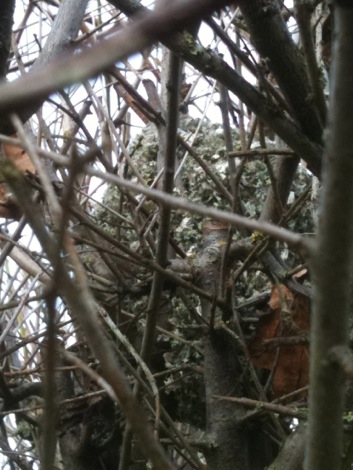
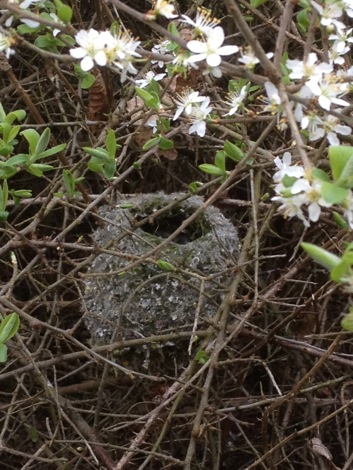
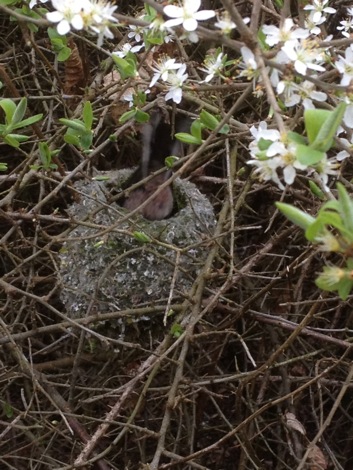
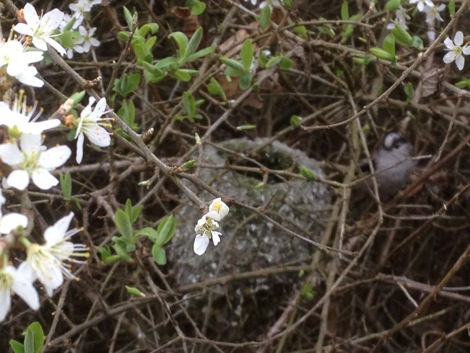
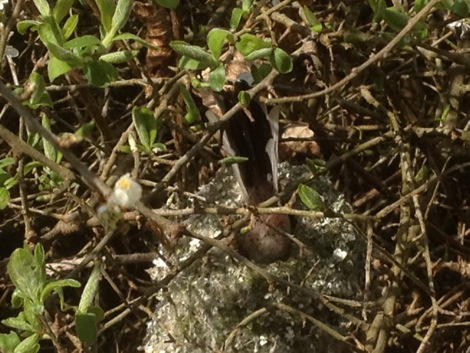
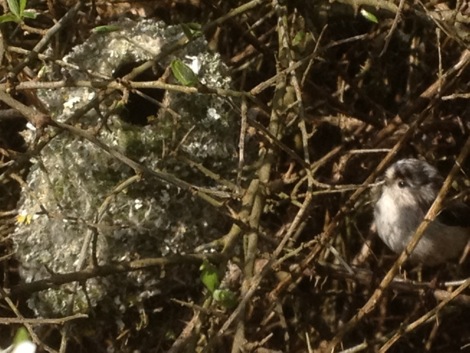
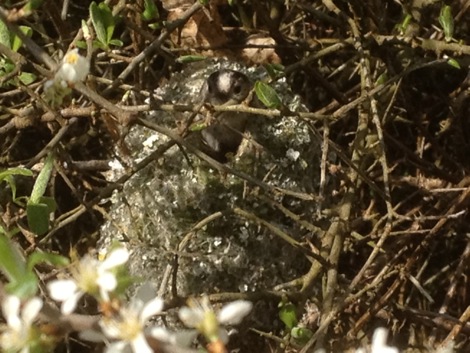
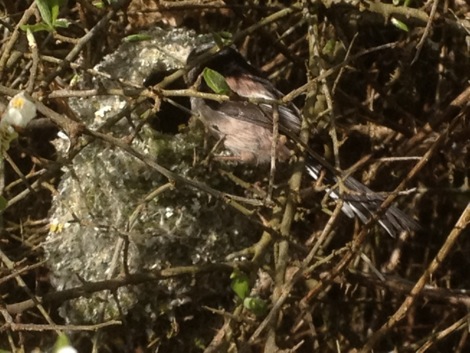
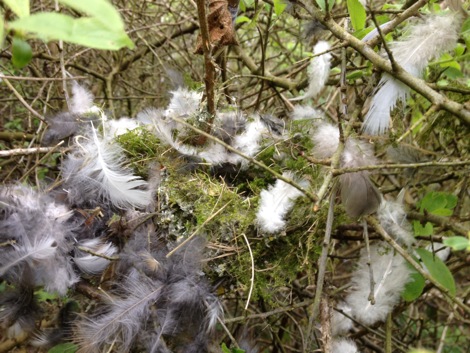
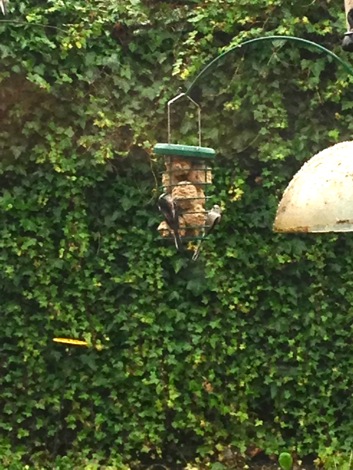
pete and i see flocks of these on the plot, don’t know if it is the one flock[chime] or several different ones, they arrive go over the trees and leave just as quickly, and it is the call that alerts you without that you would miss them they are so quick……….cheers marie
It could be the same flock as they do not forage large areas. Or the allotment may be on the border two flocks. Either way you are right, they don’t spend much time on trees etc. goodness knows how they find enough food so quickly. Cheers George
Amazing tiny birds, and have always been intrigued as to where they build their nests. We have them in the garden now, six I’ve counted aso far, they are attracted to the mix I make up myself,which is a feed of melted lard, bird seed, finch seed, hemp and broken biscuits then stuff this concoction into a small log which has various large drill holes in it and then hang these in the trees. I have three of these type of feeders [home made] and we get a large variety of the tit family also the nuthatch. Fortunate to have both hawthorn and blackthorn nearby
Cheers Marian
Hi Marian, they are lovely. You prompted me to update this article with more info about winter foods in gardens and their inability to make use of nuts and seeds. So thanks for that 🙂 Cheers George
Have noticed them here is Spain. Not many but they bob around in the mornings.
Like you enjoy the Spanish sun so do Spanish long tailed tits 🙂 see you soon keep bobbing ! G
Hi HGeorge, This has been very interesting. I have long tailed tits in my garden. Last year they completely built a nest in a prickly bush but thery did not lasy eggs and they flew off. I do have a small flock of these lovely biurds. 8/10 and yes quite often the tits fly with them. In 2011 2m long tailed tits built and reared 3 young and they fledged I don’t know why they failed in 2012 lets hope they build this year, they are alresdy coming to my fat balls sokeep your fingers crossed. Pat
13.01.13
Hi Pat, I suspect the unpredictable weather, drought then rain did nt help these small birds. Hope they do nest in your garden, let me know please! Thanks George
Thanks, George, for another fascinating feature, with the natural close ups of the nest and their delightful builders. A flock frequently seen in the nearby common and woodland (bee walk route!), and visit an apple tree in our garden, but not to the fat balls – yet.
best wishes, Kit
Hi Kit, If they see other birds feeding upon them as they dash by and if you have a bolder member of the flock hopefully that will investigate your fat balls and the others will follow. Once discovered hopefully you will get them to visit the fat balls more often. Glad you liked the article! Best wishes from,George
Please don’t forget to put sightings of these birds (and any other wildlife) into RODIS – that way they get into the Cheshire County Wildlife Database held by Cheshire’s Local Record Centre – rECOrd. See over at: http://www.rECOrd-LRC.co.uk and click on the RODIS name on the left-hand side of the page. Many thanks !
Lol! OK Steve, will do when I get my act together and have some time for this and all my other wildlife sightings!
Many thanks. I am sure they will add greatly to the database and the overall picture of Wildlife in Cheshire.
Thank you !!!
I have a pair of Long-tailed tits come to the fat ball cylinder every single day which is beautiful to watch but over the last 3 days one of them keeps flying right up to the window where i sit watching them (near the bird feeder) I am so scared it will get hurt as in it’s attempts to get near it sometimes bumps the window a little but if it can it perches right near me on the narrow sill and looks then flies to the other side of the bay window doing the same there too. This happens every time they come to the feeder now, one feeds and the other flies at the window. What is it trying to do or have you not seen this strange behaviour before? Do hope you have some advice or answers as I don’t know how to help them stay safe.
Hi Karen, nice to have such lovely visitors eh! Hopefully your feeder is not too far from your window. The further it is the more likelihood is that the bird, if it flew into the window, for example to escape a predator, it could be seriously harmed or even killed.. The nearer to your window the more likelihood it is to survive. This is because it has not built up too much speed. A male bird may think that it’s own reflection in the window is a competitor and it is trying to check it out. Alternatively the female may just be checking her ‘make up’ is in order!! 🙂
Found nest today in old rose bush fantastic structure started watching and within minutes both male and female were coming in and out of the nest
Will now be on guard against
Magpies and grey squirrels
But it’s so hard to see and in middle of thick rose thorns I’m hoping for the best
Thanks for the info
As at first I had no idea who’s nest it was
Thanks for sharing. George
A couple of these beautiful little birds started flying around and banging into our patio windows, approximately 3 weeks ago. The constant banging was a little unnerving.
My son-in-law recognised what they were, and we have pushed 2 small branches into the privet hedge, where they enjoy resting, and we can enjoy watching them flying around.
Their nest is built deep inside a thorn bush, about 4 metres away.
That is fabulous! You certainly know how to make a man jealous!! Cheers George
May 12th 2013. Surrey. Have a pair of LTT’s just completing their nest! Better late than never. It is in the top of a topiary yew so I have been able to screen the whole tree off with Netlon. Sadly last year’s nest was ravaged by a preditor even though I had screened this off with chicken wire. Can jays get through 2″ mesh?
Fully fledged chicks in green finches’ nest have been left to die. Guess a sparrow hawk got a parent. No cats in the area. Depressing.
Hello Richard,
Jays or magpies would not be able to squeeze through 2 inch nets,unless they the plastic had snapped. squirrels are very clever and will throughly inspect and test obstacle put in the way of food, (and can chew through plastic netting easily), which is what birds eggs and chicks are to hungry squirrels in search of protein for their own young. go to https://nurturing-nature.co.uk/gardening-for-wildlife/sparrowhawk-hunting-mice-in-garden/ to read more about sparrow hawk predation…..it is a similar story to tapdoles being predated by newts, dragonfly larvae etc. Sparrowhawks do it to survive and feed their young, unlike cats!
Thanks. Interesting that the LTTs go nest gathering together. One will wait for the other to complete the building process before flying off together. They spend a lot of time stripping the bark off an abelia bush, which comes off as fine hairs. They seem to take little interest in close by human activity.
Hi Richard
Really lovely article. I often get LTT’s in my garden most years but they don’t seem to stay. This year they are hanging around and must be making a nest somewhere close (I do have a long hedge with hawthorn in). They, for the last week, have been tapping on my window and pulling things out from my roof! So lovely and lucky to see them close up – they can’t see me if I don’t move due to the window reflection. They are loving my 1/2 coconut fat balls.
I was hoping to find out the difference between male and females. Can you help?
Hi Karen, leave it with me whilst I research to see what I can find. Cheers George
Hello Karen, I have done a few relevant searches. The male and female look identical, with the juvenile looking different as it lacks the pinkish plumage of an adult. A god site for info was
http://en.wikipedia.org/wiki/Long-tailed_Tit which I found very useful. I have videos the new nest I saw being made last week and it is now completed. It will go on the site shortly. There were no adults there, out foraging I suspect. Bye, George
I’ve just started putting bird feeders out in our new home which is quite rural, i get Robin’s, blue and great tits in abundance, but the other day i looked out the window and there were 2 long tailed tits what a beautiful little bird it is. same as you say they stopped for about a minute then gone and didn’t see anything till about 4 days later same time early in morning but this time there was 5 of them all hammering away at the feeders which have grounded nuts, full nuts, dry meal work and broken fat balls, but same again stopped for a fleeting moment then gone, i fair wish they would stay for longer they are so cute. i have a lot a bramble hedges and thickets around the garden and a small wood at the bottom of the garden so they’ll probably be nesting nearby, i will start putting the pea nut butter on the branches from now on thanx for the tip. i just love these little birds.
Just they only allow you a tempting glimpse, don’t they?! Cheers George
Thank you for an interesting article – your love of these little birds shines through. They are one of my favourites and I normally only see them in the winter coming to our feeders and in the trees around. We live in Gloucestershire. This year I have noticed them in the last few weeks in the garden. I was thrilled today to find them building a nest in a shrub about 3 feet above ground. I was attracted by their call then watched one with a beak full of moss go to a nest. I would be delighted if they have a family in our garden.
Hi Nicky, thanks for your kind comments. I have found another nest not too far away so I may visit it and see how they are going on with their nest. It was roofless last week…. I may video it if I get the chance! Be lovely if they do nest in your garden! 🙂 Cheers, George
Thank you George, that has been really helpful. My LTT’s are becoming very territorial as they are attacking themselves in my car side mirrors, so much so I have had to put hats on them when in my driveway. They are also doing the same to some of our windows, luckily they don’t do it for long. They are definitely here to stay this season. Unfortunately I can’t find their nest yet, although we are surrounded by fields, trees and hedges. I assume it is close by.
Hi Richard, I had a pair feeding on my birdfeeder a couple of seasons ago. They brought their young to it also. It was amazing to see. I felt really privileged that they choose my garden to help rear their young. Sadly they only visited my garden for that one season. That’s why I’m here looking for tips on how to entice them back as I forgot what type of food I had left for them. I hear them every day and and it’s marvellous.
Hi Maria, I have not been able to tempt them to nest in my garden. The habitat and vegetation is unsuitable. Cheers, George
A couple of hours ago I was visited by 5 long tailed tits in my small central London garden. They were pecking for insects amongst the shrubs and trees in my somewhat overgrown garden. Sadly only very occasional visitors however my daughter who lives in Berkhamsted, Herts. has 8 to 10 regularly on fat cylinders during the winter. I am so envious as they are such delightful birds. I came across your site looking to see what they might like to eat and will have to have a go with the peanut butter mix.
Hi Carol, let me know how you get on please. Try it inside 1/2 coconut shell. Cheers George
Thank you, George, for your message. I will certainly try the half cocoanut.
I’m also very pleased to report that my sparrow numbers have really gone up tremendously at the moment. A good 20 instead of only 6 or 8.
I have watched a steady decline in the house sparrows visiting my own garden. Glad to hear you are having success in yours 🙂 cheers, George
We put out some out of date cranberry cheese and the long tailed tits are now nearly residents!! They don’t even scare away if we are in the garden. Just feel sorry for the chicks with all that calcium they will need a chain saw to get out of the egg!!
Trish, Outdated cranberry cheese what a great recycling idea!! Thanks, George
Last year a had a pair collecting feathers in my garden and did not seem at all bothered by me a couple of metres away. I think that they nested in a neighbours garden.
[IMG]http://i268.photobucket.com/albums/jj29/John_C_R/Bird%20Pix/Long%20Tailed%20Tits/LTT_2014_03_13_75_zps096a0a68.jpg[/IMG]
This year a pair were around the garden and have nested high in a Beech hedge between me and my neighbour. do they ever re-use last year’s nest. If not would it be OK to remove it so I can show it to the grandchildren?
[IMG]http://i268.photobucket.com/albums/jj29/John_C_R/Bird%20Pix/Long%20Tailed%20Tits/LTT_2015_03_16_04_zpsgi33cvqm.jpg[/IMG]
Hi John, I doubt very much whether they do re use old nests. The time taken to repair, replace etc., possible pests inside , and the likelihood that predators know exactly where that nest is are reasons for this. They will make a fresh new nest in a new location. You will be OK to take it down, study the design and appreciate the work and time that these beauties take in making their nest. The photos? did not appear when I clicked on them. Thanks for sharing, George
If you can’t click on these copying them and pasting them into your browser works for me.
http://i268.photobucket.com/albums/jj29/John_C_R/Bird%20Pix/Long%20Tailed%20Tits/LTT_2014_03_13_75_zps096a0a68.jpg
http://i268.photobucket.com/albums/jj29/John_C_R/Bird%20Pix/Long%20Tailed%20Tits/LTT_2015_03_16_04_zpsgi33cvqm.jpg
Great photos John, are they yours? Thanks. George
Yes they are mine. More pictures here
http://s268.photobucket.com/user/John_C_R/library/Bird%20Pix/Long%20Tailed%20Tits?sort=3&page=1
My birds are at the stage of collecting feathers
John
We had a pair of long tailed tits in our garden this spring, they nested in a small bush of something that looks like small bamboo, you couldn’t really see the nest. But one morning the nest was destroyed, I suspect it was a jaybird. I am disappointed, because I really like watching those birds. Does someone have an idea if there some help/nisting option I could offer them in the long run that would be safer? Nesting houses don’t seem to be an option.
Hi Peppermint, Unfortunately long tailed tits that nest in our gardens are likely to have their nest attacked. In the wild they are ever so hard to find and their nest sites are, in the main, much more protected by thick, untidy brambles, blackthorns, dense vegetation, etc. In our small tidy gardens they are much easier to find by squirrels and magpies etc.
Thanks for sharing, George
Hello George, thank you very much for your reply. Guess there is nothing to do but hope that they found a better place in the nearby park now. I will think about the possbility to plant a thorny bush or something though.
Aw! its doubtful whether you could plant one that would really be protective for them in a garden….they will learn from that and maybe use a more suitable location next year. Cheers, George
Well maybe you are right. :/ A raven checked out the bamboo-bush today too, guess with both ravens and jaybirds on the lookout it’s just too dangerous here.
Thanks for sharing! Cheers, George
I have been watching a pair of long tailed tits bring food to their nest in my hedge. I note that they often hovver for a second on leaving the nest. Why and is this normal?
I have not had the pleasure of watching them enter the nest on several occasions, so can only think that it is a precautionary action incase predators are nearby? Thanks for sharing, George
Hello! I wonder if anyone here can help me with a query? I live at Chandlers Ford, near Eastleigh and Southampton, England. Our local large Asda store (official title, “Asda, Eastleigh”), has some Plane trees, by the Zebra crossing, near the main entrance. Every late Autumn, a delightful flock of little birds dart about, plus sometimes seem to rest a while, preening, in the higher twigs/ branches. I have often seen them in the evenings. They seem to be interested in the globular seed structures…. Several times around dusk, I have seen them take off, mostly together, but with some stragglers, and they fly in a loose group to the roof of the store, as if they are considering roosting the. Since you cannot see them once they have gone over the front edge of the building , is a mystery where they go….I’m not sure whether they stay all night in the Plane trees, perhaps they do, while the leaves are still on? Later in the winter, they don’t seem to visit the trees…..I read that long tailed tits have weak bills, that cannot make use of nuts or hard seeds, so that suggests to me that they might not the long-tailed tits….I do have some fairly clear photos , taken from under the trees, but being a bit of a novice at bird species, I would love to know exactly what these darling little birds are, that bob around overhead, chirruping prettily, and causing some shoppers to stop to watch them. I wonder hopefully if they are the ” flying teaspoons”?!
Many thanks if anyone can help with this. “Cheers”. Rosemarie.
Hi Rosemarie, it sounds as if they are after the seed so its probably a finch of sorts. Goldfinches may be a likely suggestion. Check them out! HTH, Cheers, George
Thank you, George, that is very helpful.
Would it be possible for me to send a photo or two to see if you can recognise the little birds?
If you have time, you could perhaps e-mail me, and I could send the photos right back….many thanks if this would be O.K. …..R.
Ok fine Rosemarie. Cheers, George
Hi, again, George. I just looked for pictures of Goldfinches, and they don’t seem to be the same as the Asda birds…..’my’ dear little chaps have a beigey colour breast, with a sort of dark ‘part’ ‘collar’, that seems to be like part of a black ‘scarf’ draped round the neck…..has a gap at the front….. I didn’t think of goldfinches at first, because they have brighter colours? Yellow, and some red? These are much duller generally….will keep searching….I have 2 photos ready to send if you could e-mail me, I would offer them here, but I don’t know how to transfer them to the site…..Thanks again….R.
Hi George, I wonder if you can help me? Whilst watching my bird feeder one day this week, a beautiful little Long Tailed Tit visited and plucked a sunflower seed from the feeder and then held it up to its beak to sort of ‘nibble’ on it – almost as though it was pecking at a miniature apple! I’ve never seen any bird do this before and wondered whether this is common behaviour? Hope this isn’t a silly question! Best wishes, Louise
Hi Louise, thanks for asking. The beaks of these birds have evolved to eek out small insects. I suspect the bird was struggling with this non insect hard seed and was trying to manoeuvre it for best results. Insects they eat are small and soft. The sunflower in comparison is larger and harder.HTH cheers George
We put seed out – Vine House high energy with suet – all year except mid-summer. Also peanuts all year, and fat balls ditto.
Over the last 12 months here in Gloucestershire we have found that the LTTs seems too have become resident. In the past they have been fleeting visitors as described, but now they are a constant presence, eat the seed and peanuts and the fat.
This seems to have been a learned behaviour, as initially they were only tentative and occasional feeders.
As I look out of the window now I see them amongst the blue tits, great tits, coal tits, finches, down on the bird table and peanut feeder. They also compete happily with the woodpecker, nuthatch, dunnocks and other visitors.
They differ from the other tits in their eating habit; instead of grabbing a morsel and flying off to demolish it, they sit on the table for more extended periods.
They are the boldest of the tits. They will sit fearlessly on the window sill and eat crumbs, or hang on the fatball net which is a couple of inches from the window, whereas the other tits immediately flee if one approaches.
I also notice that they do not squabble amongst themselves.
This morning for the first time I saw one with nesting material.
I suppose they have to an extent become dependant on our feeding. Well, we are here most of the time.
Ivor
Ivor, Thank you for sharing those ‘tit bits’ of interesting information. Great stuff! Cheers, George
We have long tailed tits nesting in our garden in an Azalea bush. They regularly visit the feeders (fat balls and sunflower kernels) and I’ve even seen one sharing the bird bath, for a bath with a Robin. We are delighted and can’t wait for them to fledge
Beautiful. Thanks for sharing. George
Hi, we have witnessed a wonderful sight this evening in our garden, a family of eight long tailed tits that have just fledged. I am quite concerned that they are going to be very vulnerable this evening as they are now huddled together on the ground between the shed and a tree. I have placed a wooden board in front of them to shield them, the parents are on hand to feed them. The problem is I have two cats & two dogs, the later I can keep under control, do I leave them be?
Hi Karen, what a lovely spectacle to have in your garden. Yes leave them be and keep your pets indoors until they leave. Thx for sharing, George
We have had a pair resident in our garden for about two months. An absolute delight to watch them hovering whilst they hunt. We were fortunate enough to watch one of their chicks take its first flight and all that day the adults and babies were making an absolute racket as they got airborne, got lost, found each other again. And then they were gone. All of them. Haven’t seen them for a week. I assume this is typical but we miss them and hoped someone might know if they are likely to come back or were we just lucky to have them visit at all?
Yes, a privilege. Clean nest box out of everything in it, pour boiling water into it and put up ready for next year. Wear Gloves and a dust mask. Cheers, George
Delighted to have found this site. Great information. I have a pair of LLT nesting in my garden. I now know what extra food to put out for them, to help them rear their young. Thank you all.
My pleasure Margaret. Thanks, George
I found a long tailed tit fledgling at the bottom of steps today, unable to fly, seemed hungry so fed some tiny scraps of steak, left in planter at top of steps all afternoon surrounded by moss but it was not visited by parents, and was shivering, by 6pm it was unresponsive and curled up, brought inside and warmed it up, now livened up, twittering and fluttering, but I see it has one deformed leg. I have collected greenfly and mixed it in some lamb fat with finely grated peanut, could this be fed as well as steak – can’t find any other insects -, if it survives overnight what do you suggest is the best thing to do? could it survive in the wild with a deformed leg and apparently no use of that foot? Alternatively do you know anyone near Dorchester with an aviary who could care for it? Seems a shame to give up on a living creature. Heather
Heather tough call. I don’t live near you so not familiar with wildlife vets etc. Give your local RSPB people a ring.